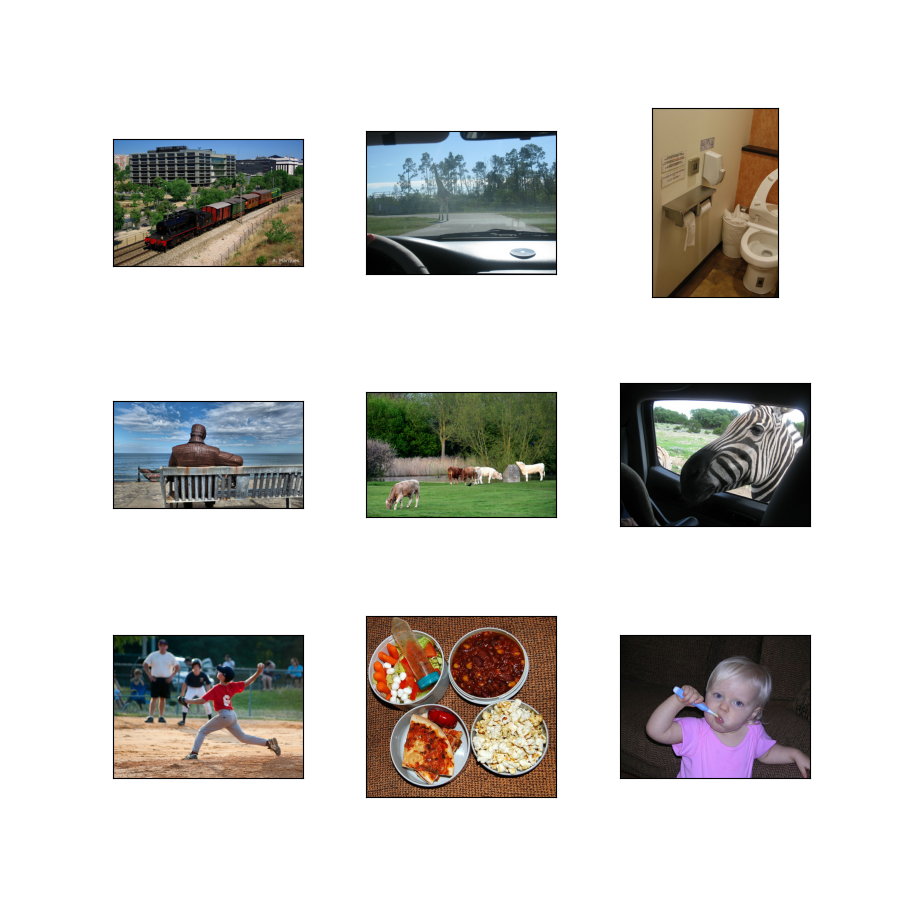- Description:
LVIS: A dataset for large vocabulary instance segmentation.
Additional Documentation: Explore on Papers With Code
Homepage: https://www.lvisdataset.org/
Source code:
tfds.datasets.lvis.BuilderVersions:
1.1.0: Added fieldsneg_category_idsandnot_exhaustive_category_ids.1.2.0: Added class names.1.3.0(default): Added minival split.
Download size:
25.35 GiBDataset size:
23.04 GiBAuto-cached (documentation): No
Splits:
| Split | Examples |
|---|---|
'minival' |
4,809 |
'test' |
19,822 |
'train' |
100,170 |
'validation' |
19,809 |
- Feature structure:
FeaturesDict({
'image': Image(shape=(None, None, 3), dtype=uint8),
'image/id': int64,
'neg_category_ids': Sequence(ClassLabel(shape=(), dtype=int64, num_classes=1203)),
'not_exhaustive_category_ids': Sequence(ClassLabel(shape=(), dtype=int64, num_classes=1203)),
'objects': Sequence({
'area': int64,
'bbox': BBoxFeature(shape=(4,), dtype=float32),
'id': int64,
'label': ClassLabel(shape=(), dtype=int64, num_classes=1203),
'segmentation': Image(shape=(None, None, 1), dtype=uint8),
}),
})
- Feature documentation:
| Feature | Class | Shape | Dtype | Description |
|---|---|---|---|---|
| FeaturesDict | ||||
| image | Image | (None, None, 3) | uint8 | |
| image/id | Tensor | int64 | ||
| neg_category_ids | Sequence(ClassLabel) | (None,) | int64 | |
| not_exhaustive_category_ids | Sequence(ClassLabel) | (None,) | int64 | |
| objects | Sequence | |||
| objects/area | Tensor | int64 | ||
| objects/bbox | BBoxFeature | (4,) | float32 | |
| objects/id | Tensor | int64 | ||
| objects/label | ClassLabel | int64 | ||
| objects/segmentation | Image | (None, None, 1) | uint8 |
Supervised keys (See
as_superviseddoc):NoneFigure (tfds.show_examples):

- Examples (tfds.as_dataframe):
- Citation:
@inproceedings{gupta2019lvis,
title={ {LVIS}: A Dataset for Large Vocabulary Instance Segmentation},
author={Gupta, Agrim and Dollar, Piotr and Girshick, Ross},
booktitle={Proceedings of the {IEEE} Conference on Computer Vision and Pattern Recognition},
year={2019}
}
